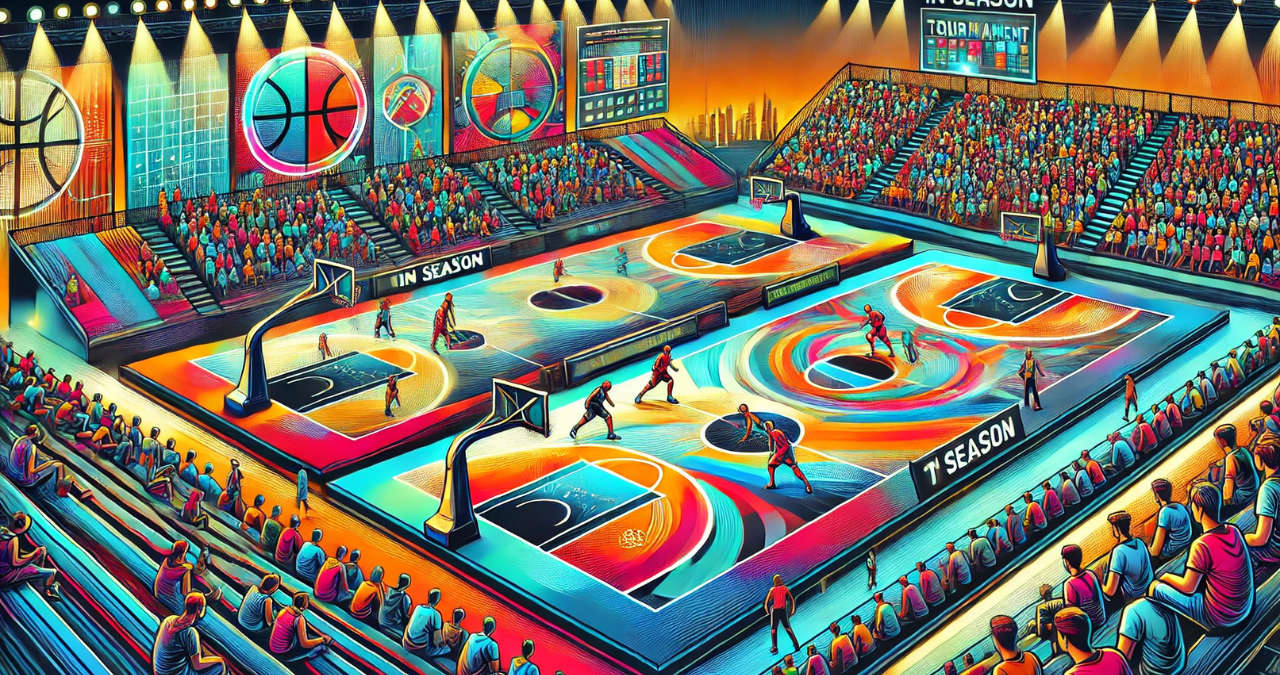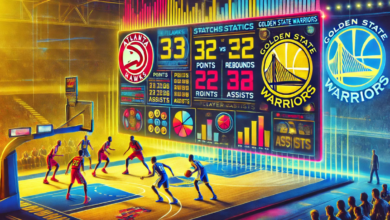Introduction
In-season tournaments are a thrilling part of the sports calendar, offering fans and athletes alike the excitement of competitive play that often brings unexpected twists and stellar performances. These tournaments require specialized courts that not only meet the professional standards but also enhance the experience for spectators and players. This article dives deep into the world of in-season tournament courts, examining their evolution, design, in season tournament courts and the innovative technologies that shape them today. We’ll explore everything from the materials used to the impact of these courts on local economies and the environment.
Evolution of In-Season Tournament Courts
The history of in-season tournament courts is as old as the tournaments themselves. Initially, these courts were simple, functional, and designed with little consideration for comfort or aesthetics. However, as the popularity of sports grew, so did the attention to the quality and specifications of these playing fields. Innovations in court design began to emerge, focusing on enhancing the safety of players and improving the viewing experience for fans.
Over the years, advancements in materials and construction techniques have allowed for the development of more durable and player-friendly courts. Modern courts now feature high-quality surfaces that reduce the risk of injury and are suitable for the high-intensity play that tournaments demand. Technologies such as shock-absorption systems and advanced moisture control keep the surface in optimal condition regardless of weather conditions. These improvements have not only elevated the level of play but have also made watching more enjoyable, as better court conditions lead to faster and more exciting games.
Design and Construction of Modern Tournament Courts
/cdn.vox-cdn.com/uploads/chorus_image/image/72810281/IST_court.0.jpg)
Today’s tournament courts are marvels of modern engineering and design. They are built using advanced materials that provide the perfect balance of grip and cushioning, crucial for player performance and safety. Innovations such as retractable roofs and underground heating systems ensure that play can continue in all weather conditions, making the tournament schedules more reliable and reducing delays that can frustrate fans and disrupt broadcasting schedules.
For instance, the use of titanium dioxide in tennis court surfaces helps in reducing the surface temperature by reflecting sunlight. This not only improves player endurance but also enhances comfort for spectators. Moreover, the integration of LED lighting and high-definition cameras has been crucial for night matches, providing better visibility for players and a more immersive viewing experience for fans both in the stadium and at home.
Environmental and Economic Considerations
The construction and maintenance of tournament courts also involve significant environmental and economic considerations. The choice of materials and construction methods can have a large impact on the local environment. Thus, many organizations are moving towards more sustainable practices, such as using recycled materials for court construction and employing energy-efficient technologies.
Economically, tournament courts can stimulate local economies by attracting thousands of visitors who spend money on accommodations, food, and entertainment. For example, a well-known tennis tournament can generate significant economic benefits for its host city, boosting the local economy by millions of dollars annually. As such, there is a growing emphasis on designing multi-use courts that can host a variety of events, ensuring year-round utilization and economic benefit.
Regulation and Standardization
Governing bodies play a crucial role in the regulation and standardization of tournament courts. These organizations ensure that all courts meet specific standards that provide a fair playing field for all competitors. This includes regulating everything from the dimensions and markings of the court to the materials used in its construction.
Regulations are not static, however; they evolve with advancements in technology and materials, as well as with changes in the ways sports are played. This dynamic regulation ensures that standards keep pace with innovations, maintaining the integrity and fairness of the sport. For instance, as new materials for surfaces are developed, they must be rigorously tested to meet safety and performance standards before being approved for use in official tournaments.
Iconic In-Season Tournament Courts
Some courts have become almost as famous as the tournaments they host, known for their iconic status and historical significance. For example, Wimbledon’s Centre Court, with its retractable roof and classic grass surface, is renowned for its tradition and has seen some of the most memorable moments in tennis history. These iconic courts often influence the design of newer venues, setting standards in luxury, spectator experience, and technological integration.
Memorable moments, like epic matches or historical milestones, add to the allure and prestige of these courts. They are not just sports venues; they are temples of history and innovation where each match adds to a legacy. As such, maintaining and updating these venues is a continuous process that balances modernization with the preservation of tradition.
Conclusion
In-season tournament courts are more than just playing surfaces; they are complex facilities that reflect the evolution of sports and the integration of technology in athletic competition. From their humble beginnings to the high-tech constructions of today, these courts have continually adapted to meet the demands of top-tier professional sports. As we look to the future, the trends toward sustainability and technological innovation will likely continue to shape the development of tournament courts, ensuring they remain at the forefront of sporting excellence.
FAQs
What makes a court suitable for in-season tournaments?
A suitable court must meet regulatory standards for dimensions and materials, provide safety and comfort for players, and accommodate the needs of spectators and broadcasters.
How do technological advancements impact player safety and performance?
Technological advancements in court surfaces and designs enhance player safety by reducing the risk of injuries and improving playing conditions, which in turn boosts performance.
What are the most environmentally friendly practices in court construction?
Using recycled materials, integrating energy-efficient technologies, and designing courts that require less water and energy for maintenance are key eco-friendly practices.
How do court innovations affect the economic aspects of hosting tournaments?
Innovations can enhance the spectator experience, attracting more visitors and increasing spending in the local economy, while also reducing operational costs through more efficient use of resources.
What future technologies could revolutionize in-season tournament courts?
Future technologies may include advanced materials for even safer and more responsive surfaces, integrated IoT sensors for real-time data analysis, and augmented reality experiences for fans.
You may also read:https://booksnews.co.uk/san-antonio-spurs-vs-denver-nuggets-match-player-stats/




